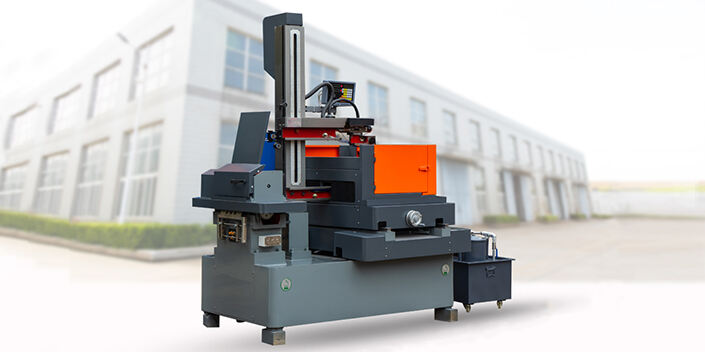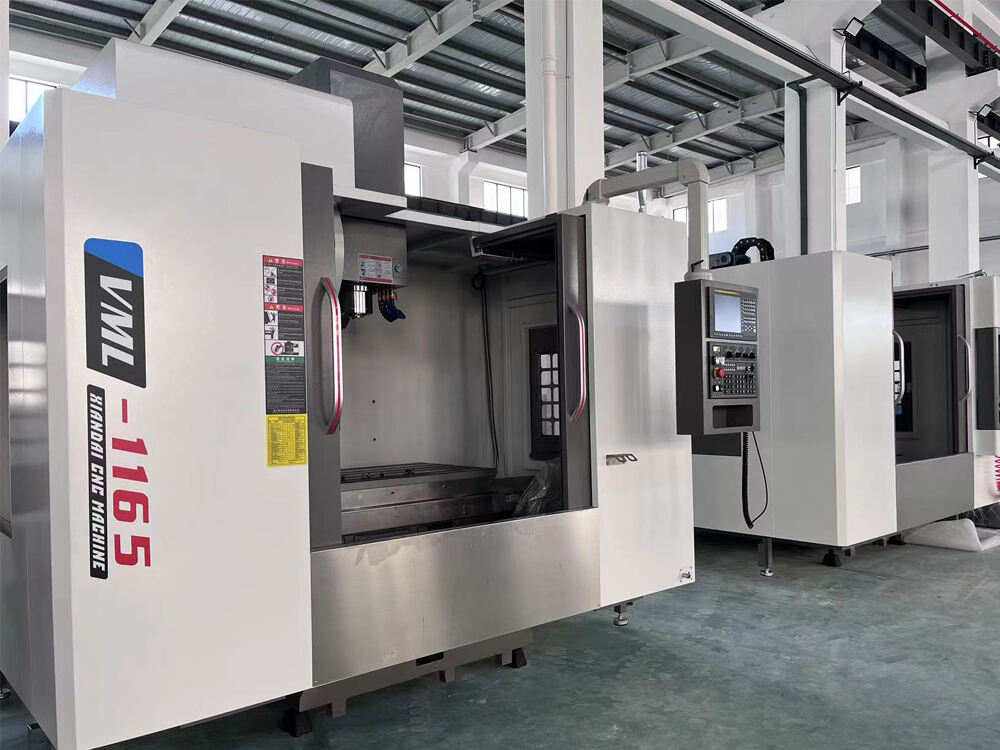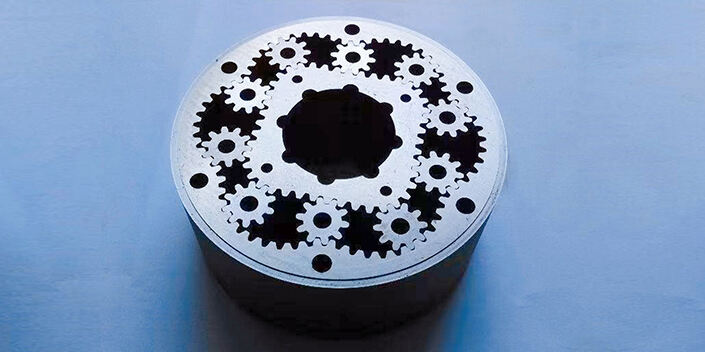Understanding the Spring Machine and Its Role in Precision Coiling
What Is a Spring Machine and How Does It Enable Precision Coiling?
Spring machines are basically computer controlled systems that take metal wire and shape it into those tight spiral forms we see in so many products. They work by using super tough tools along with programmable controllers to get the wire placement down to almost microscopic levels of accuracy. This lets factories produce all sorts of springs consistently whether they need compression types, extension springs or even those twisty torsion models. Newer machines have gotten pretty smart too. They can tweak things like how tight the wire is pulled, how fast it spins around, and the spacing between coils while running. Every single coil comes out meeting exact size requirements most of the time. Some industry reports show these modern machines cut down on size differences by about half when compared to old fashioned manual techniques. Plus they handle wires ranging from really thin at just 0.1 millimeters thick up to much thicker ones measuring 30mm across.
The Evolution of CNC Spring Coiling Machines in Modern Manufacturing
The advent of CNC tech completely changed how springs get made, mainly because it brought about those real time adjustments possible thanks to servo motors working alongside automated feedback systems. Back in the day when everything was mechanical, operators had to switch tools manually every time they wanted to make a different kind of spring, which really capped production at around 200 pieces per hour. Fast forward to today's CNC machines, and we're talking about outputs exceeding 8,000 springs each hour with incredible precision down to plus or minus 0.01 millimeters tightness according to that recent report from Advanced Coiling Systems in 2023. What makes all this possible are several major improvements over traditional methods including...
- AI-Driven Predictive Maintenance: Reduces unplanned downtime by 62%
- Multi-Axis Tooling Heads: Enable simultaneous coiling and end-loop shaping
- Material Memory Compensation: Adjusts for wire springback using material elasticity algorithms
Key Parameters Controlled by Spring Machines: Pitch, Stiffness, and Spring Index
Spring machines govern three critical performance factors through programmable settings:
| Parameter | Definition | Manufacturing Control Method | Impact on Performance |
|---|---|---|---|
| Pitch | Distance between adjacent coils | Feed rate synchronization | Determines compression travel distance |
| Stiffness | Force per unit deflection (N/mm) | Wire diameter adjustments | Affects load-bearing capacity |
| Spring Index | Ratio of mean diameter to wire size | Mandrel and guide tool positioning | Influences stress distribution |
By optimizing these parameters, manufacturers can achieve spring rates varying from 0.5 N/mm (delicate medical devices) to 500 N/mm (industrial shock absorbers) within the same production line.
Compression and Extension Springs: Machine Setup and Tension Control
Design Fundamentals of Compression Springs: Load Resistance and Spring Rate
Compression springs work by turning mechanical energy into stored force when they're compressed, and their effectiveness really depends on three main design aspects: how thick the wire is, how many coils are active, and what's called the spring index. When engineers make the wire just half a millimeter thicker, this can boost the spring rate by around 42% for most common uses. At the same time, making the coils sit closer together actually makes the spring stronger under load. The tricky part comes when balancing all these elements with the spring index calculation (which basically compares the average coil size to the wire thickness). Getting this right prevents something called buckling, which matters a lot in things like car suspension systems and industrial valve mechanisms. These applications often have limited space but still need powerful springs that fit in tight spots.
Optimizing Spring Machine Settings for High-Volume Compression Spring Production
CNC spring coiling machines achieve ±0.02mm wire positioning accuracy through optimized parameter settings:
- Feed speed: 12–15m/min for carbon steel (balances productivity against tool wear)
- Pitch control: Automated adjustments maintain ±2% consistency across large batches
- Coil counting: Vision systems verify 99.9% count accuracy, reducing rework by 18%
This setup enables manufacturers to produce 2,400 compression springs/hour while maintaining ISO 9001 tolerances, crucial for medical device components requiring sub-millimeter precision.
Extension Springs: Managing Pre-Load and Initial Tension During Coiling
Extension springs work differently than compression ones because they need about 15 to 25 percent preload tension when being wound up. Without this tension, the hooks and loops just won't hold together properly after repeated stretching and contracting. Manufacturers have started using laser calibrated mandrels for making garage door springs, which cuts down on tension variations from plus or minus 8% all the way down to around 1.5%. That kind of accuracy really matters in things like trampoline suspension systems that get used hundreds of thousands of times each year. When those springs aren't releasing energy consistently, people end up with broken equipment and frustrated customers who want their money back.
Precision End-Loop Formation: Machine Adjustments for Reliable Output
Forming tools guided by CNC technology produce end loops with an angular precision of around half a degree, which is really important for getting the right force distribution when it comes to conveyor belt tensioning systems. When companies started using real time diameter checks during production, they saw something interesting happen in the agricultural equipment sector last year warranty issues dropped by almost 27%. What makes this possible? The whole operation needs careful coordination across three different movement directions. First there's the wire bending along the Z axis, then managing how tight the loop closes on the Y axis, and finally dealing with any twisting effects along the X axis. Getting all these elements working together smoothly is what separates good results from problematic ones in manufacturing.
Torsion Springs: Torque Calibration and CNC Programming for Angular Force
How Torsion Springs Generate Rotational Energy and Maintain Torque Consistency
Torsion springs work by storing rotational energy when their coils deform under stress, turning applied torque into stored elastic energy. These springs are different from regular compression or extension types because they apply force in a radial direction rather than straight line motion. This makes them especially good for situations where controlled rotation is needed, such as in car door hinges or factory equipment balance systems. The spring rate depends on several factors including wire thickness, number of coils, and how rigid the material is. Getting the legs aligned correctly can actually boost torque consistency by around 30 percent during repeated usage cycles, which matters a lot in applications that run constantly over time.
Aligning Legs and Calibrating Arm Configurations on the Spring Machine
Getting the legs positioned just right makes sure force spreads evenly across those torsion spring arms. These days, most CNC spring machines come equipped with servo-driven mandrels that tweak arm angles pretty precisely, usually within half a degree either way. This kind of tight control keeps everything symmetrical when it comes to how forces radiate out from the center. When door hinge springs have legs that aren't aligned properly, they tend to wear out much faster – studies show around 40% shorter lifespan because stress builds up in weird spots. Skilled operators spend time adjusting feed systems until everything balances out correctly. They know experience tells them when something feels off even if the numbers look good on paper.
- Arm length (15–250mm typical range)
- Bend radius (1.5x wire diameter minimum)
- Angular offset (0°–360° customizable)
Programming CNC Spring Machines for Variable Load Cycles and Durability
Advanced CNC systems enable real-time adjustments to wire feed speed (5–30m/min) and coiling pitch (0.1–5mm) to accommodate dynamic load requirements. Variable-rate programming extended service life by 22% in aerospace components subjected to 10,000+ load cycles. Key CNC parameters include:
| Parameter | Impact on Performance | Optimal Range |
|---|---|---|
| Torque calibration | Prevents over-twisting | 0.1–50 Nm |
| Angular resolution | Maintains tight (±0.25°) arm angles | 0.01° increments |
Reducing Fatigue Failure Through Optimized Coil Geometry and Material Use
When cold coiled music wire with a UTS range of 1900 to 2300 MPa gets paired with elliptical cross section coils, fatigue resistance really takes a leap forward. These special coil shapes cut down on those pesky stress peaks by around 18% compared to regular round wire designs. Looking at materials, tests show that 17-7 PH stainless steel springs can handle roughly 2.3 times as many angular deflection cycles as their carbon steel counterparts in medical devices. Pretty impressive stuff for something so small. And manufacturers aren't stopping there either. Modern CNC machines come equipped with smart AI systems that automatically fix any geometry issues larger than 0.02mm while running at top speed through production runs.
Specialty Springs: Advanced Coiling Techniques for Non-Uniform Geometries
Performance Benefits of Tapered, Conical, and Hourglass Spring Designs
Springs that aren't uniform in shape, including those that taper, cone shaped ones, and hourglass forms tackle some tough problems engineers face every day. Take tapered springs for instance they can handle about 18 to maybe even 25 percent more load within the same space as regular round springs, which is why many designers prefer them when dealing with vibrations. Then there are conical springs that actually cut down on their compressed height by roughly 30 up to 40%, yet still manage to move the same distance. This makes them great choices where space is at a premium. And don't forget hourglass shaped springs either these spread out the stress across their coils around 22% better than other types, so they tend not to bend or warp as much during repeated use. We see this benefit especially in things like robot joints that need to withstand constant motion without breaking down over time.
CNC Challenges in Fabricating Variable-Diameter Springs with Tight Tolerances
CNC spring machines run into special problems when making springs with changing diameters that need about plus or minus 0.05 mm precision. Programming toolpaths gets really complicated for cone-shaped springs since the wire thickness changes along the way, which means operators have to tweak feed rates and adjust mandrels as they go. Getting uniform pitch spacing right on those hourglass shaped springs is another challenge altogether. Most shops rely on closed loop feedback systems these days to handle the springback issues that pop up across roughly 14 to 18 different curvature sections in the wire. This kind of fine control makes all the difference in quality end products.
Smart Spring Winding Processes for Complex Coil Shapes in Aerospace and Medical Devices
Industries that need extreme precision rely on special coiling techniques to make medical springs that meet FDA standards, often working within incredibly tight tolerances of about .0005 inches for helical gradients. When it comes to aerospace applications like latch mechanisms, manufacturers typically use computer controlled machines that blend different approaches. They start with cold coiling to get the basic shape right, then follow up with laser cutting to form those unique elliptical ends that are kind of a trade secret. What's interesting is how these manufacturing methods result in nearly identical performance characteristics from batch to batch. Tests show around 99.8 percent consistency when looking at how well these 316LVM stainless steel springs hold up after going through half a million load cycles, which is pretty impressive considering the demands placed on them in real world conditions.
Innovations Driving Custom Spring Manufacturing for High-Precision Industries
Recent advances in strain mapping technology have allowed spring machines to tweak winding tension automatically as they measure material thickness in real time during production. The results? A significant drop in waste materials - around 37% less scrap when making those special titanium-nickel memory springs used in satellites. Big names in the industry are getting smart too. Many are pairing their equipment with AI systems that predict when maintenance will be needed, along with flexible tooling arrangements. This combination cuts down on setup time between different jobs. For companies producing small batches of custom springs, this means changeovers take about half as long as before, which makes all the difference when meeting tight deadlines.
Comparative Performance: Energy Storage and Release Across Spring Types
Efficiency of Energy Storage in Compression, Extension, and Torsion Springs
The three main types of springs compression, extension, and torsion all handle stored energy differently because of how they're built and work mechanically. Compression springs are great at taking on straight line pressure, storing energy based on how stiff they are and how long they are when not compressed. Take a standard compression spring rated around 50 Newtons per millimeter it can hold about 15 Joules worth of energy according to those Hooke's Law formulas we learned back in physics class. Extension springs work differently since they deal with pulling forces instead. These springs actually store more energy per size because they start with some built-in tension already. That's why they're so commonly used in things like garage door openers where the same amount of force needs to be applied consistently every time someone opens or closes the door. Torsion springs twist instead of stretch or compress, creating rotational energy as they bend. What matters most for these isn't just how much energy they can store but whether they deliver the same torque repeatedly. A good quality torsion spring about 10 mm thick will keep delivering pretty much the same torque strength even after going through 50 thousand cycles if it's been set up correctly from the beginning.
Material Selection and Its Impact on Consistent Energy Release in High-Cycle Applications
Material properties directly influence spring performance under repetitive stress:
| Material | Fatigue Strength (MPa) | Optimal Use Case | Cycle Lifespan Improvement |
|---|---|---|---|
| High-Carbon Steel | 550 | Automotive suspension systems | 300,000 cycles |
| Silicon-Chromium | 780 | Industrial valve springs | 700,000 cycles |
| Titanium Alloy | 620 | Aerospace actuators | 1,200,000 cycles |
Regular high carbon steel still works well for parts that don't see too many cycles, though when loads get heavy, switching to silicon chromium alloys makes sense since they cut down on fatigue failures by around 40 something percent according to testing. Materials that can handle heat, such as Inconel, last much longer in tough conditions where temperatures run hot, keeping their performance stable even when things get up to about 800 degrees Celsius. Medical device manufacturers needing super tight tolerances often turn to cryogenically treated stainless steel because it holds up better over time, reducing stress issues so force measurements stay within about 5% accuracy range after millions upon millions of operation cycles.
By aligning spring machine settings with material characteristics and load requirements, manufacturers optimize energy storage-to-release ratios across industries—from consumer electronics to heavy machinery.
FAQs
What materials are commonly used for springs?
Springs can be made from various materials, including high-carbon steel, silicon-chromium, and titanium alloy. The choice of material affects the spring's performance, durability, and suitability for specific applications.
How do CNC spring machines improve manufacturing?
CNC spring machines allow for real-time adjustments, increased precision, and higher output rates, enabling the production of complex spring shapes with tight tolerances while reducing waste and downtime.
What is the impact of spring shape on performance?
Non-uniform spring shapes like tapered, conical, and hourglass designs offer advantages such as increased load capacity, reduced compressed height, and better stress distribution, making them suitable for specific high-demand applications.
Table of Contents
- Understanding the Spring Machine and Its Role in Precision Coiling
- Compression and Extension Springs: Machine Setup and Tension Control
- Torsion Springs: Torque Calibration and CNC Programming for Angular Force
- How Torsion Springs Generate Rotational Energy and Maintain Torque Consistency
- Aligning Legs and Calibrating Arm Configurations on the Spring Machine
- Programming CNC Spring Machines for Variable Load Cycles and Durability
- Reducing Fatigue Failure Through Optimized Coil Geometry and Material Use
-
Specialty Springs: Advanced Coiling Techniques for Non-Uniform Geometries
- Performance Benefits of Tapered, Conical, and Hourglass Spring Designs
- CNC Challenges in Fabricating Variable-Diameter Springs with Tight Tolerances
- Smart Spring Winding Processes for Complex Coil Shapes in Aerospace and Medical Devices
- Innovations Driving Custom Spring Manufacturing for High-Precision Industries
- Comparative Performance: Energy Storage and Release Across Spring Types
- FAQs





